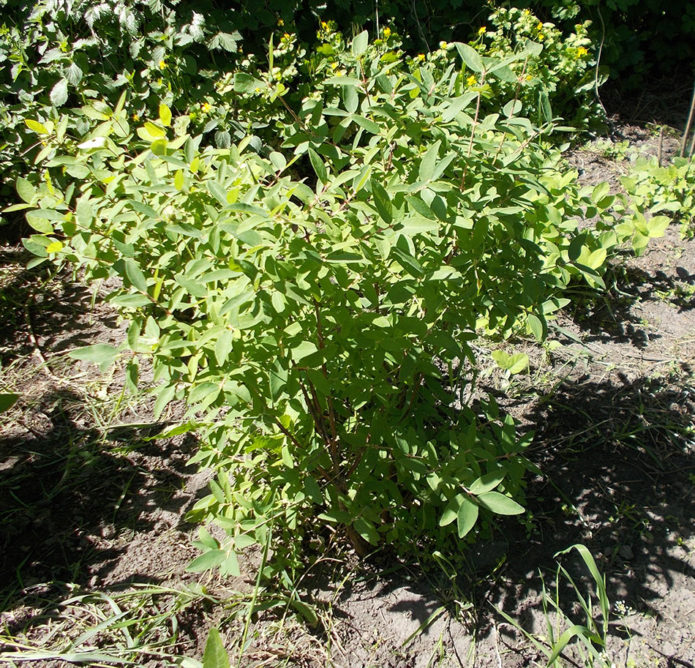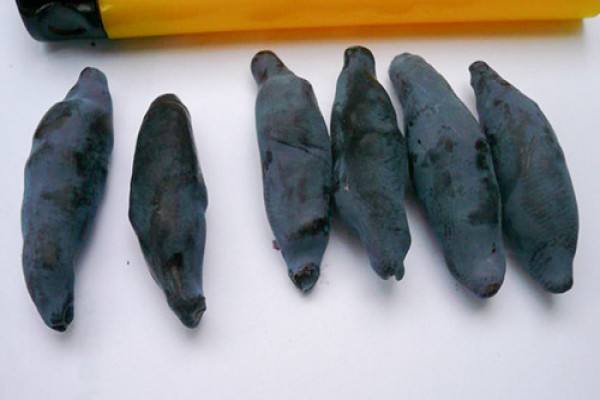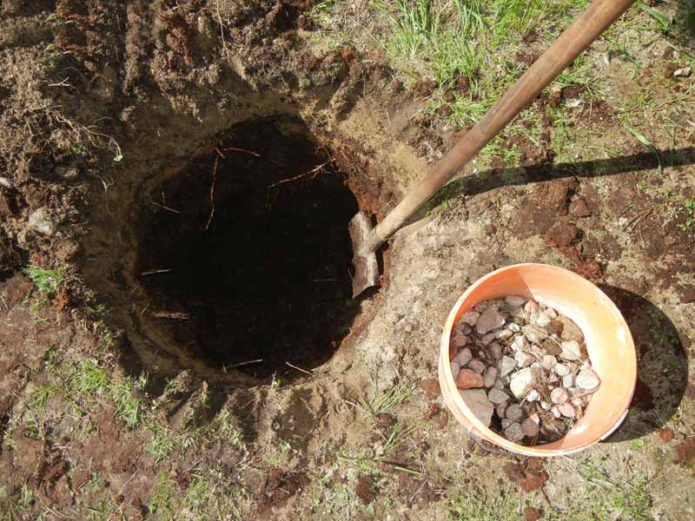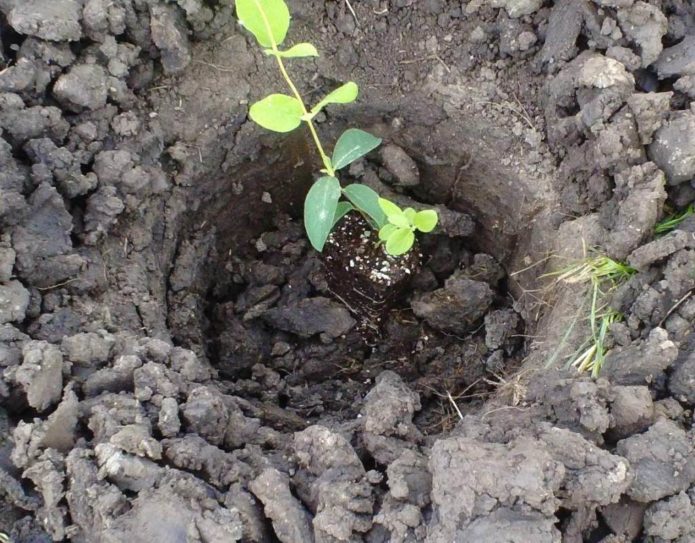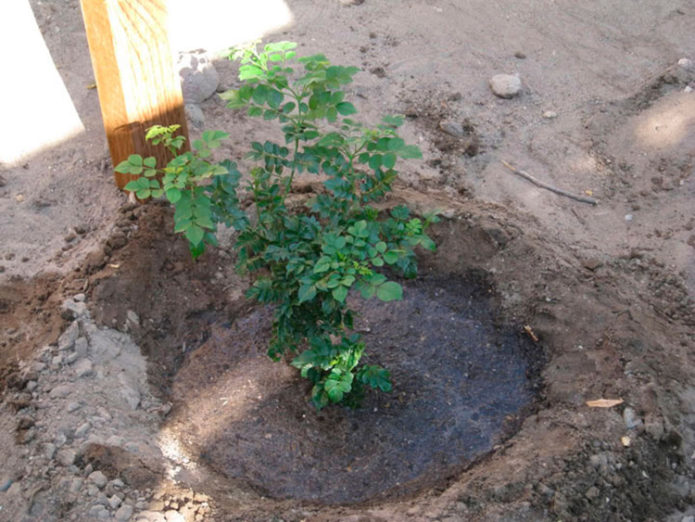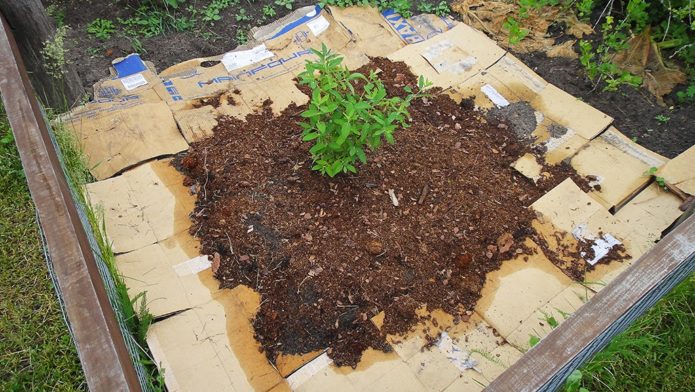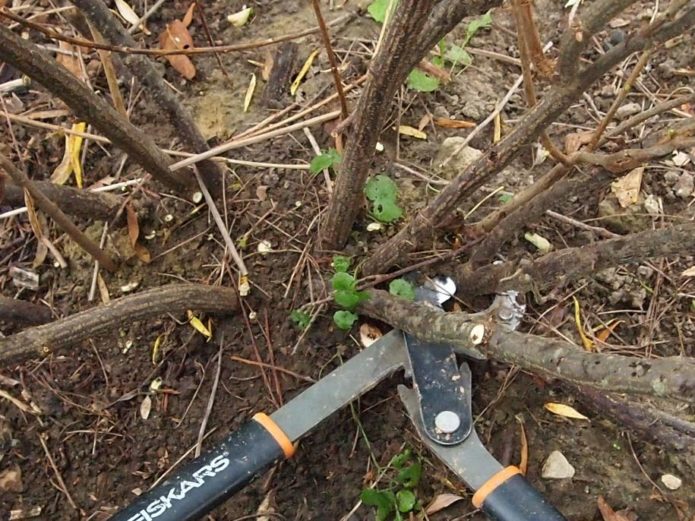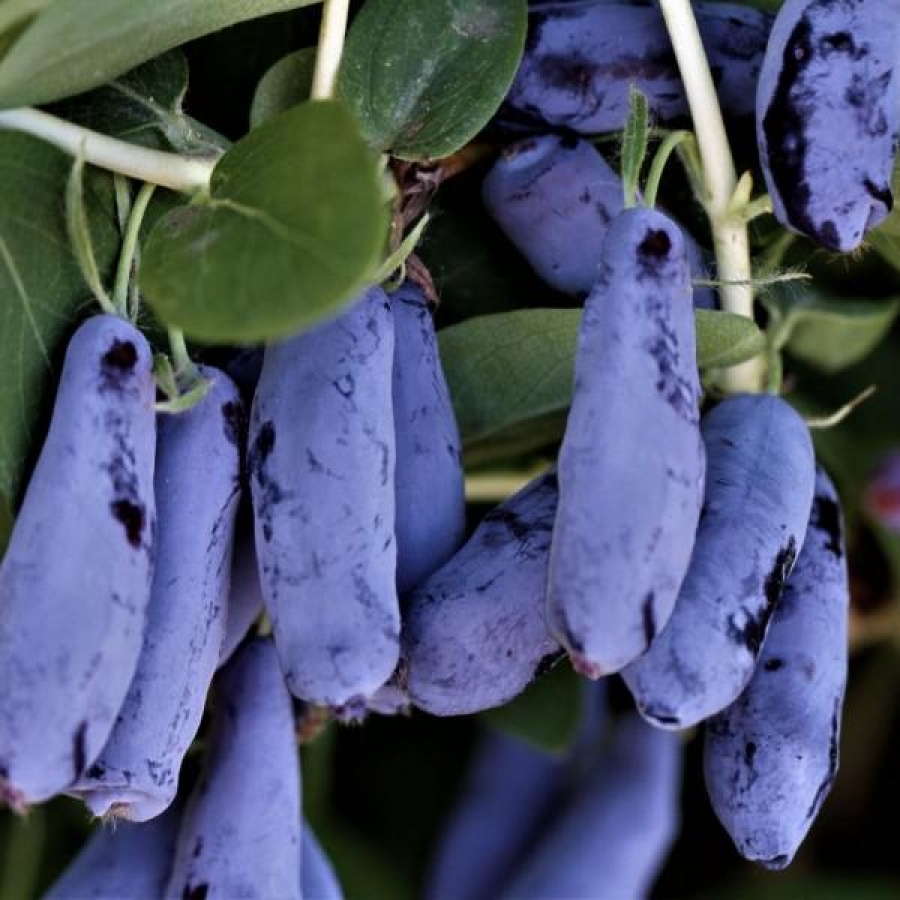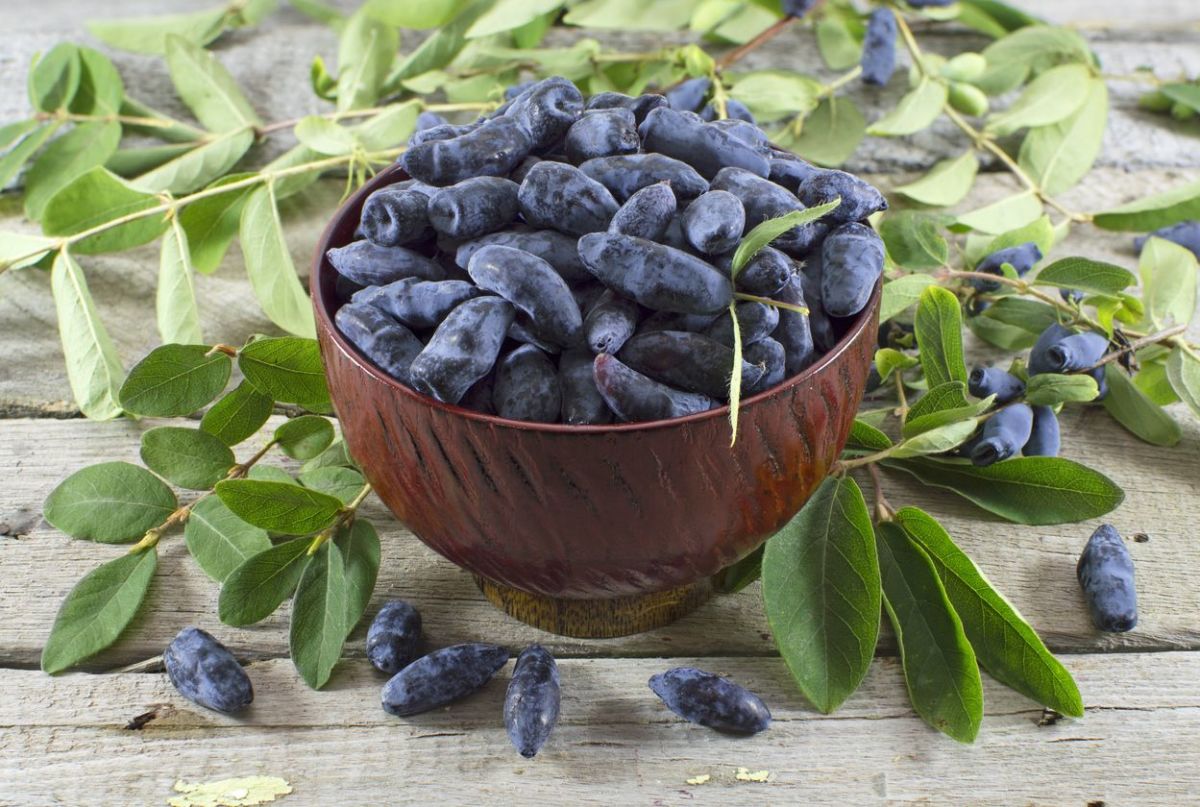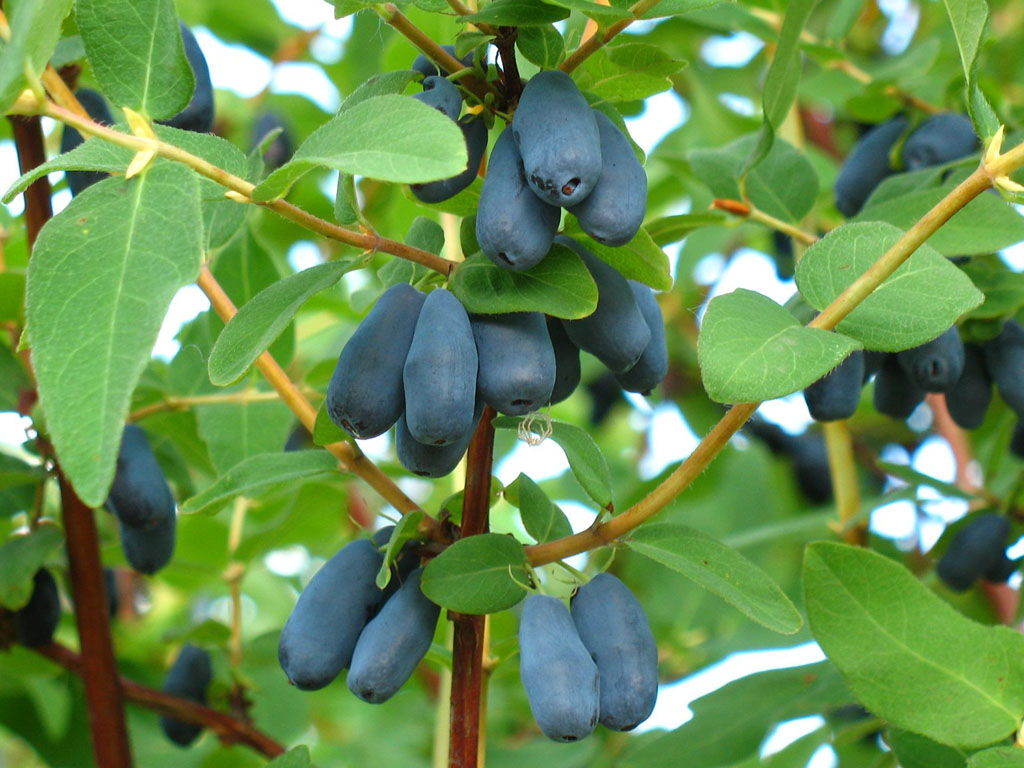Honeysuckle is a relatively young crop for amateur gardening; it is not often found on our plots. However, as new varieties appear, the popularity of honeysuckle is growing, and an increasing number of summer residents in the middle lane and more northern regions are trying to plant several bushes. One of the most famous varieties is the Blue Spindle.
Content
Description and characteristics of honeysuckle Blue spindle
Honeysuckle Blue Spindle is a representative of berry bushes that supply vitamin products as one of the first garden plants, at the earliest possible date. This is one of the reasons that the variety is popular.
Origin of the variety
Honeysuckle is a mid-latitude plant, and it is especially common in the Siberian regions. Most varieties are also bred there, including the Blue Spindle. The place of origin of the variety is the Research Institute of Horticulture of Siberia (Barnaul), the authors are Z.P. Zholobova, I.P. Kalinin and Z.I. Archer.
Work on the variety was carried out in the 70s. of the last century, the winter-hardy Kamchatka honeysuckle Start, which was treated with a mixture of pollinators, took part in the selection. State trials of the obtained seedlings began in 1980, and in 1989 the variety, one of the first among honeysuckle varieties, was registered in the State Register of Breeding Achievements.
Almost all honeysuckle varieties present in the State Register are recommended for cultivation throughout the country. However, this is only an official recommendation, it is rather arbitrary. Not everywhere does honeysuckle feel comfortable. He does not like extreme heat and drought, so this shrub is rarely found in the southern regions, and those enthusiasts who try to grow it rarely get decent results.
Plant characteristic
The honeysuckle bushes of the Blue Spindle variety are rather large, about one and a half meters high, the crown is rounded, slightly thickened. Shoots are thin, greenish, in the sun with a "tan", no pubescence. Leaves are usually green in color, large.
Due to the rare arrangement of branches, the berries are well illuminated by the sun, acquiring not only the blue color traditional for honeysuckle, but also a deeper one, up to purple.
The blue spindle blooms very early, and recurrent spring frosts are not terrible for flowers. Like many varieties of honeysuckle, without pollinators, Blue Spindle is almost unproductive. Fortunately, almost all flowering varieties at the same time can serve as pollinators, for example, Cinderella, Blue Bird, Tomichka, Kamchadalka.
The first berries, in small quantities, may appear as early as the next year after planting. They ripen in the first half of June, in the warmest regions - even in May. The yield is good, reaching 2 kg per bush. The winter hardiness of the variety is extremely high; it also tolerates a prolonged lack of moisture.
Berries
The shape of the berries corresponds to the name of the variety and resembles a spindle.The base is flattened, the apex is pointed. The berries are large: in length they can reach almost 3 cm, in diameter they exceed 1 cm, the weight of the berry is on average about 1 g, maximum - 1.5 g. Blue-blue, in a ripe state, almost purple berries are slightly lumpy, covered with a waxy coating.
The pulp is tender, sweet and sour, the taste is refreshing. A slight bitterness in taste can be felt with a lack of moisture in the soil. The tasting score is 3.7 points, but for berries processed into various blanks it is higher - up to excellent. Therefore, not everyone loves fresh berries, they are quite sour, but they enjoy using honeysuckle, grated with sugar, compotes and jelly from these berries.
Features of planting and growing varieties of honeysuckle Blue spindle
Honeysuckle bushes live a long time, and they can be transplanted at almost any age. Nevertheless, it is better to immediately choose the right place and plant the acquired seedling according to all the rules so that it quickly gives the first harvest.
Landing
Planting honeysuckle of the Blue Spindle variety is practically no different from planting most varieties: it is better to do this in October in a place protected from the winds, but sufficiently lit. Any honeysuckle loves moist soil, but does not tolerate wetlands. The Blue Spindle variety does not have any special requirements for the composition of the soil, but it grows best on sandy loams and loams with a neutral or slightly acidic reaction. Very acidic soils are preliminarily limed, consuming up to 0.5 kg of dolomite flour per 1 m2.
Best of all, two-year-old seedlings take root, which are planted about a month before the onset of stable frosts. However, seedlings with a closed root system can be planted at almost any time, except on very hot days. The blue spindle tolerates severe frosts, up to -45 ° C, but by the onset of negative temperatures, the bush should have time to take root in a new place.
The Blue Spindle cannot be planted alone; this variety needs pollinators to successfully set berries. But even if there are no other varieties of seedlings available, planting a second similar seedling nearby (1.5–2 meters away) will partially solve the problem: there will be very few berries, but for a start, there will be enough to try.
When planting a large number of bushes, there should be enough space between the rows for the gardener to move freely. Considering that the bushes will grow well over the years, this is at least 2.5 m.
Long before planting, it is worth digging up the entire area in order to remove the rhizomes of all perennial weeds. With this digging, it is desirable to lightly fertilize the ground with humus. The further course of action is as follows.
- The planting hole is prepared at least a week before planting. Its size is from 40 x 40 x 40 cm, but on clay soils - deeper to place on the bottom a layer of 10-12 cm of drainage (gravel, broken brick or just coarse sand). The removed soil is mixed with fertilizers (a bucket of humus, a liter of ash, 150 g of superphosphate) and returned back. Water well.
- Before planting, part of the soil is removed, the seedling is lowered into the hole so that the roots are freely located. The root collar is placed almost at ground level: as a result, after planting, it should go into the soil by 4-6 cm, this is the norm.
- Gradually they cover the roots with earth, tamping it down, and water the seedling with a bucket of water.
- Having made a roller for irrigation along the edges of the hole, the soil is mulched with any loose material (peat, sawdust, humus).
In the case of seedlings with a closed root system, they are not buried during planting.
Care
After a timely autumn planting, Blue Spindle honeysuckle overwinters well, but for the first winter it is better to slightly huddle the seedling and even cover it with coniferous branches. In early spring, the shelter is removed, and the soil is slightly loosened.In the first year, the bush is watered often, in subsequent years, depending on the weather. The soil should be slightly moist at all times, but not sticky.
The Blue Spindle variety is quite drought-resistant, and in rainy weather it does not need watering at all. The rate of water consumption in dry weather is 2-3 buckets per adult bush per week. If the soil is not moisturized enough, the berries may be too bitter. Loosening is carried out very shallow, but systematically. Instead, keep the trunk circle under a layer of mulch, renewing it periodically.
The feeding scheme is as follows:
- immediately after the snow melts, half a bucket of rotted manure is scattered around the bush, mixing it with mulching material;
- during the flowering period, similarly to manure, 2 handfuls of wood ash are introduced, this procedure is repeated at the end of summer;
- in the fall, mineral fertilizers are applied: 1-2 tbsp is poured into a shallow groove along the periphery of the bush. tablespoons of superphosphate and 1 tbsp. a spoonful of potassium sulfate.
Since the Blue Spindle variety is not subject to thickening of the bush, it is pruned to a minimum. The first 3 years allow the branches to grow unhindered, after which they carry out sanitary pruning (removal of damaged and very weak shoots), and also annually cut out 2-3 of the oldest shoots at the very base of the bush. If the branches are clearly not growing in place, intersect or shade the center of the bush, the extra branches are also removed. Shoots located close to the ground are also cut out.
Unfortunately, Blue Spindle honeysuckle berries do not ripen at the same time, and ripe berries do not hold well on the branches. Therefore, with the beginning of the appearance of ripe berries, they must be picked every 2-3 days, and this should be done very carefully. It is better to spread any cloth under the bush before picking so that the crumbling berries are easy to pick later.
Advantages and disadvantages of the variety in comparison with similar
The advantages of the Blue Spindle variety are:
- high stable yield;
- very early ripening of berries;
- solid size of berries;
- ease of caring for the shrub;
- highest frost resistance and good drought resistance;
- compactness of the bush;
- high resistance to diseases and pest attacks.
Among the disadvantages are:
- the need for replanting pollinators;
- insufficiently good taste of fresh berries;
- excessive crumbling of ripening berries.
Currently, in the State Register of the Russian Federation in the section "Honeysuckle" there are more than a hundred varieties, among them there is honeysuckle of various ripening periods, but any of them can be grown in almost the same conditions. Many varieties have appeared in the last few years, but in general, the population of the list has occurred evenly over three decades. The undoubted advantage of the Blue Spindle variety is the early ripening of the crop. Among the early ripening varieties, it is not among the best in berry quality. Thus, the varieties Baikalovskaya (2002), Gzhelskaya early (1998) and Pamyati Kuminova (2017) have a tasting rating of 4.8, and Sibiryachka (2000) and Strezhevchanka (2017) - 4.9.
All early-ripening varieties of honeysuckle have similar characteristics regarding resistance to diseases and pests, their berry size is relatively the same, but, apparently, the Blue Spindle differs for the better in frost and drought resistance, one of the highest in its yield. Although, of course, the yield in the case of honeysuckle is not the dominant factor: it can be negated by the shattering of the berries (and in this case it is too high). And in general, the culture cannot be considered high-yielding: the most important advantage of honeysuckle is that it gives vitamin products in the garden one of the first, when other berries are not yet ripening.
Video: comparison of popular varieties of honeysuckle
Reviews
If you want really not bitter, but tasty and even sweet, look for the varieties Nymph, Morena, Leningrad giant, Cinderella, Blue spindle. And do not look at the size of the berries - this is not always an indicator of their pleasant taste.
The blue spindle was bought simultaneously with Tomichka for 9 years. The Blue Spindle bush is low and the yield is naturally low. This variety confuses me very much with its crumbling. We cover the bushes with a net from birds, and when we remove the net, a lot of berries lie on the ground under the bush of this variety. But it should be noted that these varieties grow in different corners of the plot and their growing conditions are different.
The old variety, I removed it - there is no sweets at all, sour with bitterness, refreshes, especially at a time when there are still no berries, but no one eats that in my family.
Nowadays, mostly sweet varieties. Bitter ones are wild, mostly. You still have to plant 2-3. It is better if they are of the same ripening time - for pollination, my favorite is the Blue Spindle. Only he crumbles, but the berries are large.
Video: Review of Blue Spindle Honeysuckle
The honeysuckle variety Blue Spindle is distinguished by the early ripening of large berries and unpretentiousness to growing conditions. These two factors, as well as high yields, have led to the fact that this rather old variety has not yet lost its popularity.
